Why white spots appeared on the leaves of cucumbers: reasons and what to do, how to deal with powdery mildew
On the leaves of your cucumber seedlings, still growing on the windowsill or already planted in the open ground or greenhouse, white spots suddenly began to appear, which made you look for the reasons for this clearly not "positive" phenomenon.
Well, then you will find out why white spots could appear on the leaves of cucumbers, a sign of what kind of fungal disease they are most likely to be, and also what, in fact, you need to do than treat cucumbers from white powdery plaque.
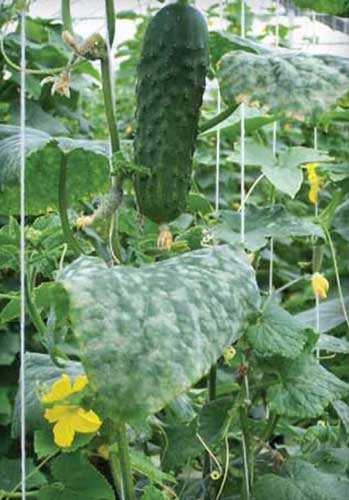
Content
Causes of white spots on cucumber leaves
If you search the Internet, you will find information that white spots on cucumber leaves can be symptoms of a number of diseases, including:
- White mosaic (such a disease does not exist at all, there is only viral disease "mosaic of cucumber"at which spots are speckled and yellowishbut no way not white);
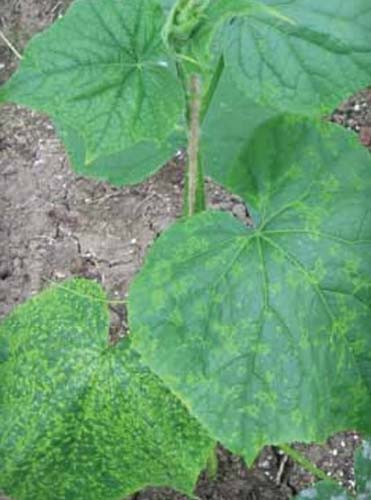
- Anthracnose (again, the spots have a completely off-white characteristic shade);
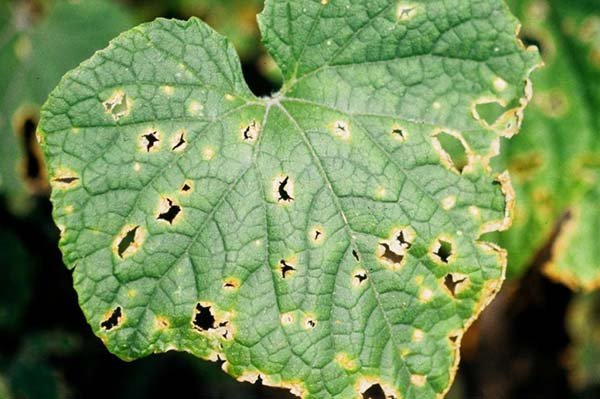
- Alternaria (and again not that, the spots are brown).
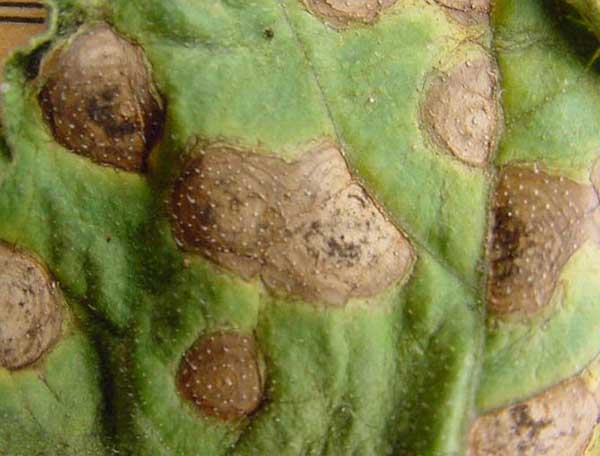
- Of course, it could bespider mite (but in this case the leaves turn yellow (turn brown), but in no way turn white).
Advice! The site already has detailed material about how to deal with spider mites on cucumbers in a greenhouse (in open ground, he almost does not attack, the conditions are unsuitable).
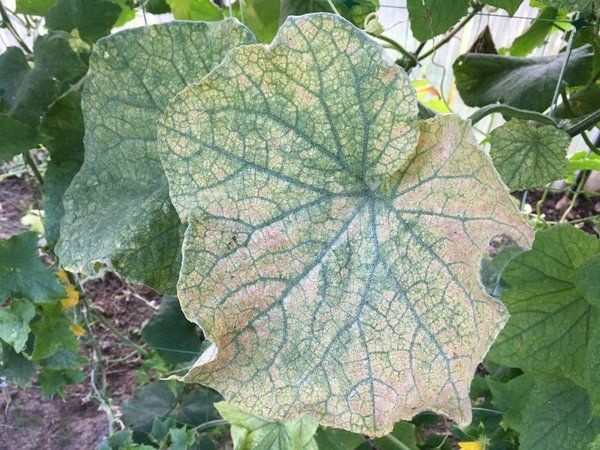
And still, likely, your cucumber plant was struck exactly powdery mildew.
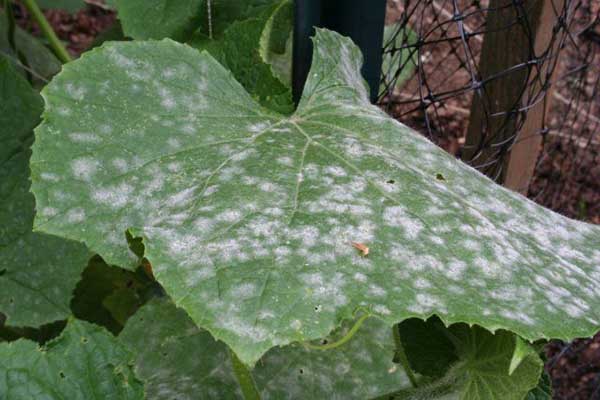
Note! Cucumbers are more often striking downy mildew (downy mildew)... However, in this case, the leaves will have characteristic yellow spots, not white.
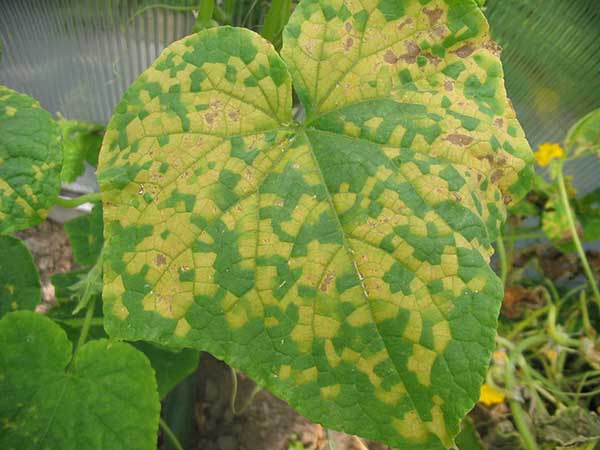
By the way! The site has a separate article about why do cucumber leaves turn yellow and dry.
Powdery mildew of pumpkin (white powdery bloom)
Unfortunately, not only cucumbers, but all other pumpkin crops (zucchini, pumpkins, watermelons and melons) can be affected by powdery mildew.
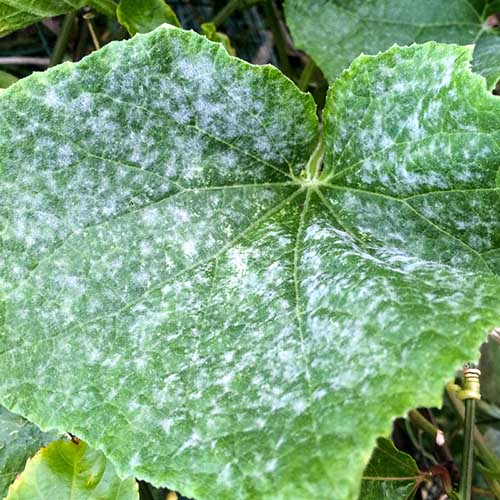
Description of the disease: symptoms and conditions of development (causes)
The causative agents of the disease on cucumbers, zucchini, pumpkins, melons and watermelons are powdery mildew fungi belonging to the obligate parasites:
- Erysiphe cichoracearum (distributed in the northern regions, the optimum temperature is + 16-20 degrees);
- Sphaerotheca fuliginea or Podosphaera fuliginea (common in southern regions, the optimum temperature is + 25-27 degrees).
And also Levellula taurici (common in Central Asian and other southern republics of the CIS).
In other words, the development of the disease, depending on the area of cultivation (north or south), is facilitated by moderate temperatures.
Infection can occur in the temperature range from +16 to +30 degrees, while the optimal temperature ranges from +20 .. + 27 degrees (at higher values, the development of the disease slows down and completely stops at a temperature of +30 .. + 32).
Also favorable conditions conducive to the development and appearance of powdery mildew on cucumbers are:
- high air humidity (dew formation);
Interesting! At the same time, the fungus is able to germinate even in dry air, but its intensive development occurs precisely at a relative humidity above 80-90%.
- watering cucumbers with cold waterespecially in hot and dry weather.
- insufficient illumination.
Important! With sharp fluctuations in temperature and humidity (drops in the night and daytime), the disease can acquire a pathological course of development.
Where do they winter?
Because fungi that cause powdery mildew are obligate parasites (they need a living host to survive), then they overwinter on weeds and plant debris.
What are the signs (symptoms) of infection of cucumbers with powdery mildew?
The first signs of the disease can be seen on the underside of the sheetwhere appears subtle white powdery coating (fungus sporulation). On the top side of the sheet thus formed characteristic spots of white (they seem to be sprinkled with white powder), which gradually merge and darken (acquire a more brown tint). In this case, the leaves are deformed, turn yellow and dry out, falling prematurely.
As a rule, the fruits themselves (cucumbers) are not damaged (plaque does not form on them), however, due to deformation and falling of the leaves, the greens can receive sunburn, shrink and wither (become not juicy).
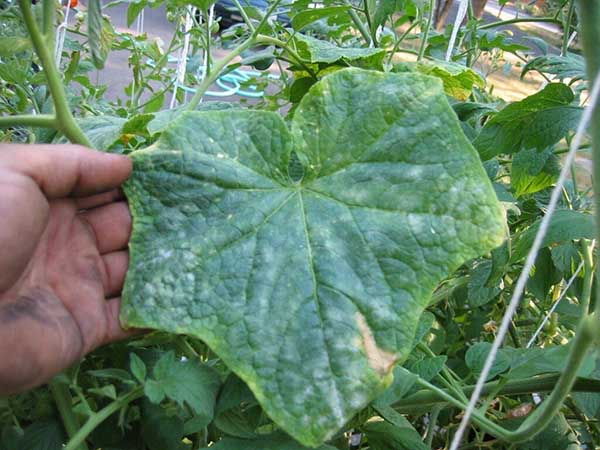
Thus, now you understand that in the event of a severe defeat, you must certainly apply measures to combat powdery mildew on cucumbers, because this fungal disease can cause significant damage to your crop.
Control and treatment measures: what to treat (with what fungicidal preparations)
Agrotechnical measures of prevention (protection) and control:
- cultivation of powdery mildew resistant varieties and hybrids;
- weed control (regular weeding);
- collection and destruction of plant residues after harvest;
- correct watering (including warm water) and maintaining normal humidity in the greenhouse;
- airing the greenhouse in order to prevent air stagnation and sudden temperature changes that cause dew to form in the greenhouse;
- observance of the rules of crop rotation and crop rotation (cucumbers should not be planted after cucumbers and other pumpkin seeds - zucchini, pumpkins, watermelons and melons, since they are affected by the same diseases).
However, if the cucumbers in your area (especially in the greenhouse) from year to year (= regularly) are affected by powdery mildew, then only the timely implementation of preventive (protective) spraying with chemical and biological fungicides will allow you to prevent infection at an early stage of the growing season, as well as to stop or at least reduce the spread of the disease during the fruiting period, thereby reducing crop losses.
A few basic rules for effective spraying:
- Processing is required in dry and calm weather, in the morning or in the eveningor in the afternoon, if cloudy.
- Spraying must be carried out carefully, the working solution should be applied evenly, wetting the leaves on both sides.
- As a rule, after treatment, the fluffy white mycelium disappears, and chlorotic spots remain on the surface of the leaves.
Important! Of course, where more environmentally friendly (safe for your health) will be used to treat powdery mildew biological fungicides, and not chemical agents, especially if the cucumbers have already begun to bear fruit (ripen).
Chemicals
Chemical fungicides (disease control agents) to combat powdery mildew:
In brackets, the active substances, the method of penetration, the nature of the effect and the scope of the drugs are indicated.
- Tiovit Jet (Colloidal sulfur, contact fungicide and acaricide, against powdery mildew and mites).
Spraying during the growing season.
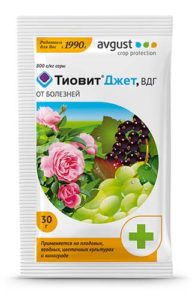
On sale you can find and simply colloidal sulfur (= Tiovit Jet).
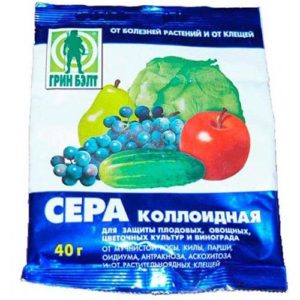
Important! At temperatures above +30 degrees, sulfur cannot be used, because the treatment may cause burns on the leaves.
- Topaz (Penconazole, systemic protective fungicide).
Spraying during the growing season.
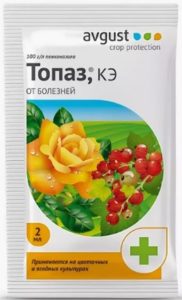
- Quadris (Azoxystrobin, a systemic contact fungicide of a protective action, against powdery mildew and peronosporosis (downy mildew).
Spraying during the growing season, before and after flowering with an interval of 7-14 days.
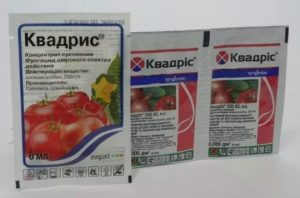
- Strobe (Kresoxim-methyl, systemic fungicide of protective and curative action).
Spraying during the growing season.
The drug is used only in a system with other fungicides. The next growing season on this plantation requires a change of culture.
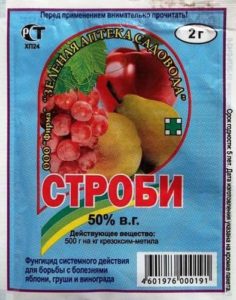
Biological agents
Biologicals:
- Baktofit (Bacillus subtilis strain IPM 215, contact fungicide of protective, immunizing and curative action).
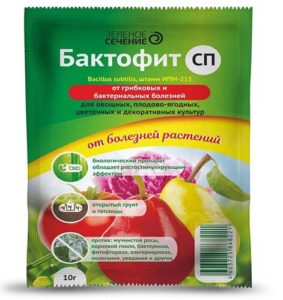
- Alirin-B (Bacillus subtilis strain B-10 VIZR, systemic contact fungicide of protective, immunizing and curative action, against powdery mildew, peronosporosis (downy mildew), root and basal rot, tracheomycotic wilting).
Spraying during the beginning of flowering - fruit formation with an interval of 7-10 days (in the greenhouse) and 7-14 days (in the open field).
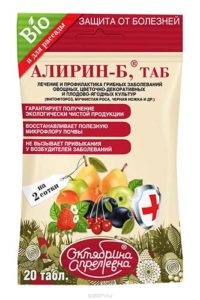
- Gamair (Bacillus subtilis strain M-22 VIZR, a systemic contact fungicide of protective, immunizing and curative action, against powdery mildew, peronosporosis (downy mildew), root and basal rot, tracheomycotic wilting).

- Pre-sowing soaking of seeds for 1-2 hours, followed by drying.
- Spraying during the growing season in phases: beginning of flowering - fruiting with an interval of 15 days.
- Fitosporin (Bacillus subtilis strain 26 D, a systemic fungicide of protective and curative action, against powdery mildew, peronosporosis (downy mildew), root and basal rot, fusarium wilting).
The first spraying is prophylactic, the subsequent spraying at intervals of 7-10 days (in the greenhouse).
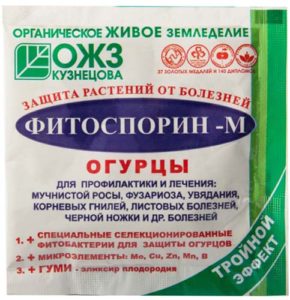
- Sporobacterin (Bacillus subtilis and Trichoderma viride, strain 4097, a systemic contact fungicide of protective, immunizing and curative action, against powdery mildew (including peronosporosis (downy mildew), root rot, fusarium wilting and angular spotting).
- Soaking seeds in a 1% solution for 6 hours before sowing.
- Watering at the root with 0.1% working solution in the phase of 3-4 true leaves. Re-processing if necessary after 20 days.
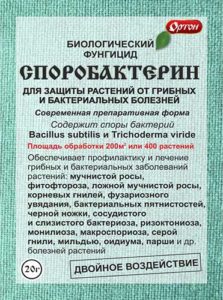
Folk remedies
In the fight against powdery mildew, spraying with the following folk remedies of natural origin can help you:
- infusion of manure;
- infusion of stinging nettle;
- milk whey or skim milk (skim milk) diluted with water;
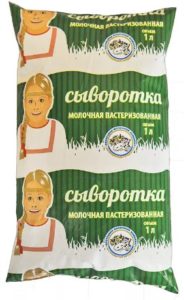
Mechanism of action: a film forms on the leaves, which prevents the growth of the fungus.
- kefir, yogurt or sour milk.
Mechanism of action: lactic acid bacteria contained in them kill the fungus.
However! Do not use this method if there is a high probability of aphids that are even harder to fight.
Well, now you know what to do if suddenly white spots with a mealy bloom appear on the leaves of your cucumbers. Successful treatment!
By the way! If you find yellow spots on the leaves, then we advise you to read this material on the topic (this issue).

